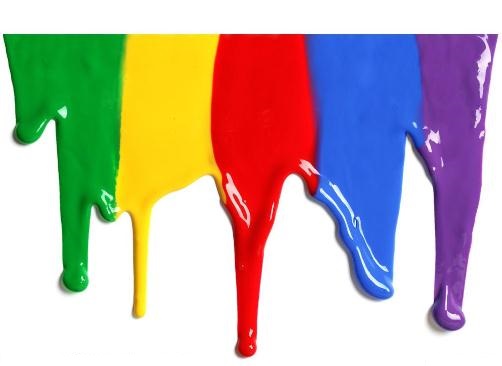Growth in China’s coatings market has ground almost to a standstill. But the slowdown could be good news for the long-term health of the industry, according to analysts CCM.

Is China’s coatings market in crisis? The slowdown in output since the start of 2015 has certainly been dramatic - from 11.7 per cent growth during the first two months of the year to a decline of 5 per cent in April, with average growth of just 1.4 per cent over the course of H1 2015, according to data from China’s National Bureau of Statistics (NBS).
Meanwhile, there is precious little good news coming from downstream industries such as real estate, where growth has plummeted despite the government’s attempt to stimulate the market by lowering interest rates and reducing deposit requirements for second homes.
And with China’s economy appearing more likely to slow down further than speed up over the coming months, the ‘new normal’ of lower growth in the coatings market could be here to stay for some time to come.
|
Real Estate |
New housing construction area: Down 15.8 per cent YoY Area of housing projects completed: Down 13.8 per cent YoY |
|
Automotive |
Production: Up 2.6 per cent YoY; growth slowed by 7 per cent YoY Sales: Up 1.4 per cent YoY; growth slowed by 7 per cent YoY |
|
Furniture |
Output: Up 0.6 per cent YoY; growth slowed by 4 per cent YoY |
|
Watercraft |
New orders: Down 72.6 per cent YoY |
Source: CCM and NBS
But producers’ profits are up
But the slowdown is having very little effect on the bottom lines of China’s leading producers - in fact, many coatings companies posted bumper profit figures for H1 2015.
SKSHU Paint Co. Ltd.’s profits were up over 30 per cent year-on-year during H1 2015, while Chongqing Sanxia Paints Co. Ltd.’s net profits were four times higher than last year. Overall, profits across the industry are predicted to rise 8-10 per cent this year, according to China’s National Coating Industry Association (NCIA).
Why are so many producers doing so well in the midst of such a sharp slowdown? The answer lies primarily in the Chinese government’s environmental protection drive.
Painting the coatings industry green
China introduced two
major policy initiatives during the first two months of 2015 in a bid to clean
up the coatings industry.
First came the new Environmental Protection Law, perhaps the most significant piece of environmental legislation passed in China since 1989, which came into force on January 1. Then, in February, the government introduced a new 4 per cent tax on coatings with Volatile Organic Compound (VOC) content over 420 grams per liter during processing.
The policies have had a dramatic effect on the coatings industry, not only reducing pollution levels but also effectively putting an end to the race to the bottom that was hindering the industry’s long-term development.
Producers have been
forced to invest in upgrading facilities to reduce emissions, resulting in a
large number of small- and medium-size producers withdrawing from the market as
they could not afford the upgrades, according to NCIA.
This has reduced oversupply, increased the concentration of the industry and relieved the downwards pressure on prices to a certain extent, boosting the profit margins of the producers who remain.
Larger producers have
also gained an advantage from the tax on high-VOC products. According to CCM’s
research, the vast majority of smaller producers simply cannot afford to
develop low-VOC coatings, meaning that most smaller producers have been hit
with the new 4% tax while many larger producers have avoided it.
What’s more, these low-VOC products fetch a higher price on the market, and the larger producers are already reaping the rewards. Production value grew much faster than production output in H1 2015, according the Yang Yuande, General Secretary of the NCIA.
Pouring money into water-based coatings
Perhaps the most
important focus of competition among large-scale producers over the next few
years will be water-based coatings.
Environmentally friendly and high-value, these products have become even more attractive since the introduction of the new environmental regulations and coatings tax. China Coatings News predicts that water-based coatings will account for 60% of the Chinese market by 2020.
International producers are also alive to the opportunity, and both PPG and Axalta have announced plans to invest in water-based coatings in China. PPG’s USD1.8 million expansion project in Tianjin is already underway and will eventually produce 4,000 tonnes per year, while Axalta plans to invest USD50 million to produce 25,000 tonnes of water-based coatings annually.
However, the rise of water-based coatings will not benefit the TiO2 industry to a large extent. According to industry sources, the unit application of TiO2 in water-based coatings is only very slightly higher than in oil-based products.
For more information
about the coatings market in China, please visit www.cnchemicals.com or contact us
directly by emailing econtact@cnchemicals.com.
About CCM
CCM is the leading market intelligence provider for China’s coatings and TiO2 markets. We provide our clients with Market Data, Newsletters, Industry Reports, Company Profiles and a range of Consulting Solutions. For more information, please visit www.cnchemicals.com.
-
Average:5
-
Reads(4186)
-
Permalink


 Back to Cnchemicals.com
Back to Cnchemicals.com 